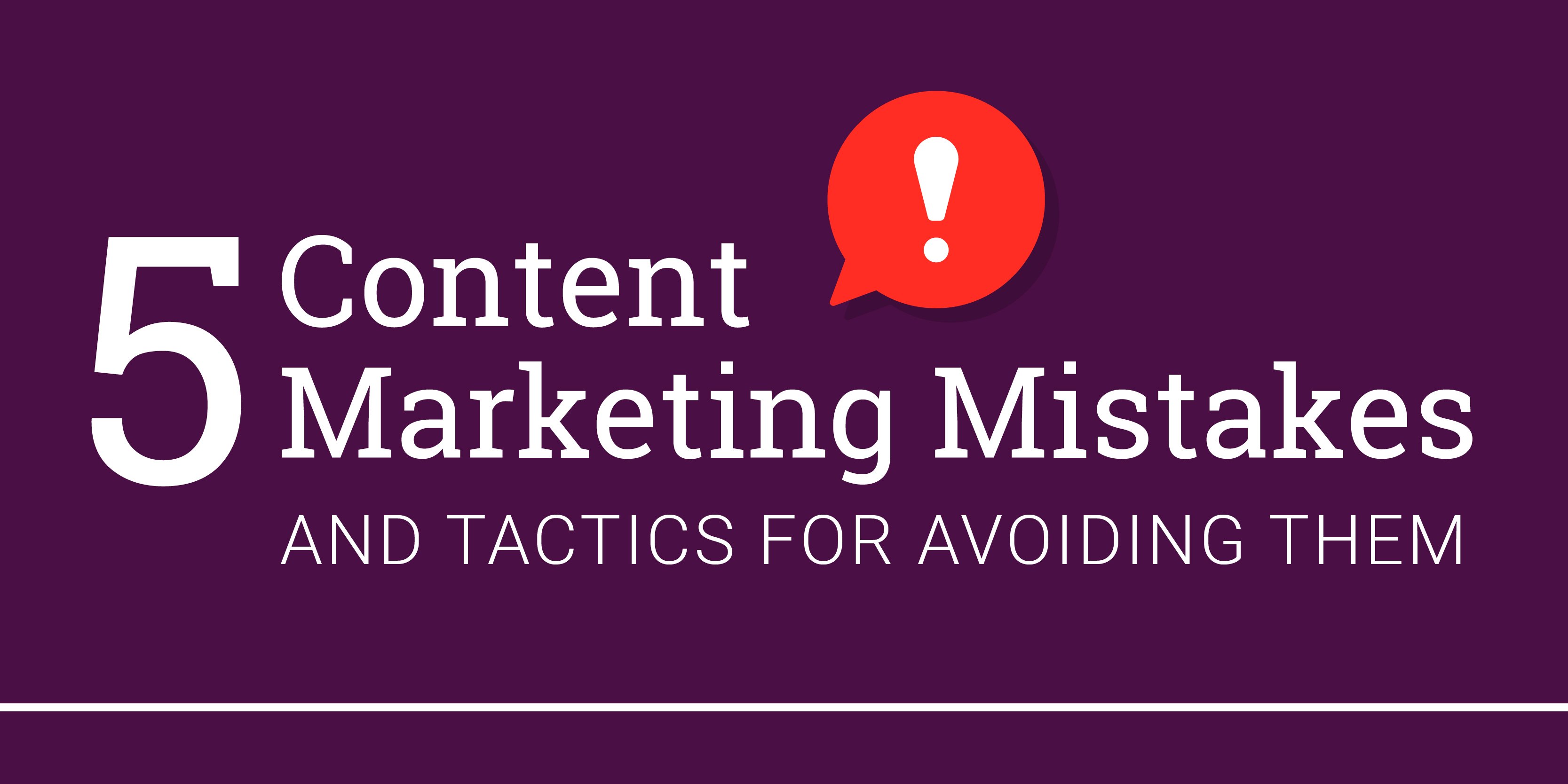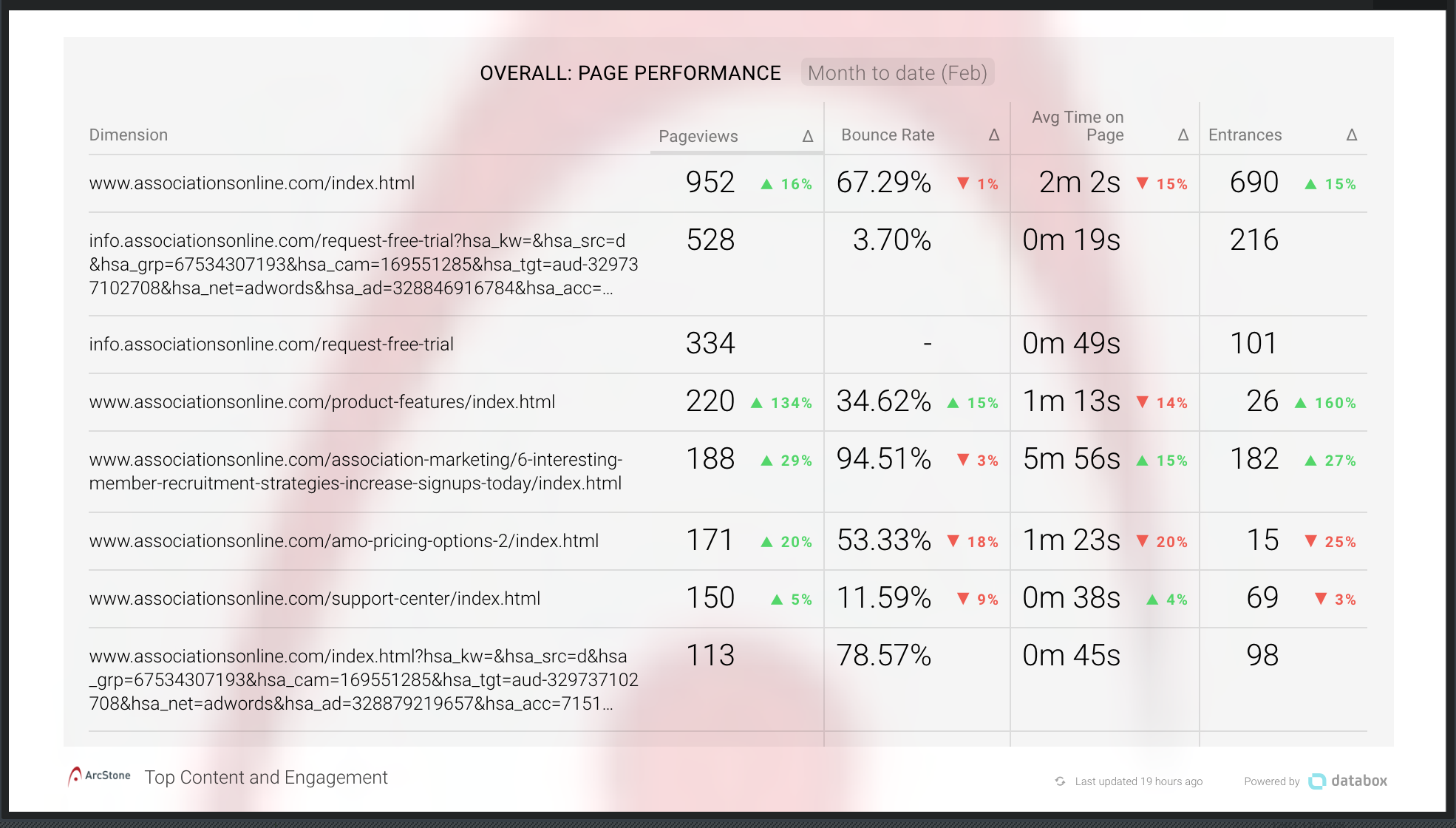
Content marketing is a strategy that uses the power of storytelling to build a connection with your audience, and ultimately it gives them what they want at that precise moment in time.
Sounds easy right? Wrong! Yes, it seems quite simple to throw together a blog post, but that doesn’t mean you’ve got your content marketing bases covered.
Content marketing requires planning and a solid strategy. Investing in a plan is time well spent because content marketing is one of the most effective ways to generate leads online and it’s the cornerstone of inbound marketing.
Still, lots of people rush into content marketing without a plan. Over the years, we’ve seen lots of mistakes. Here are five common missteps and a few helpful tactics for avoiding them.
Your content doesn’t connect with your audience.
It’s crowded out there and there’s more noise than ever. If your audience isn’t interested in your content, chances are, they’ll bounce away or worse yet, never even find your website.
Before you sit down to write your first blog post, think about your audience. What matters to them? What are their challenges? What problems are they trying to solve? How can you help them?
Take 10 minutes to brainstorm a list of topic ideas. Don’t censor yourself, just let the ideas flow.
Once you’re done, review your list. Are there themes? Are there topics that tend to crop up again and again?
If you have absolutely no idea what your audience wants, ask them. Interviews are effective but tend to be time-consuming. If you’re stretched for time, surveys work great and they’re very easy to implement.
Unless you’re geeks like we are at ArcStone, the research part of content marketing isn’t the fun part and it often gets overlooked. Take time to research. Find a subject matter expert that you can rely on accurate information.
Your content is boring and difficult to read.
Not everything you write will be a masterpiece. That’s why it’s essential that you use design elements to make your content easier to skim and grasp the high points.
Avoid using big blocks of content that are impossible to quickly skim. Use headings and short paragraphs that encourage your audience to continue reading. There’s a tactic called bucket brigades that encourages people to keep reading. This technique uses short phrases to keep the reader enticed.
Wait... there’s more. (See what I did there?)
Don’t forget images. Always add at least one featured image that supports your content. Be sure and ALWAYS make sure to use licensed images.
You don’t use CTA’s.
This is a common one. I can’t tell you how many times I’ve encountered a new client’s blog that’s good. It’s regularly updated with fresh content but there’s nothing for their audience to do once they finished reading.
EVERY piece of content you produce should include a clear call to action (CTA). Your CTA’s should be relevant and motivate your audience to take the next natural step. Consider where they are in the customer journey. If they’ve just started their research, a CTA asking them to schedule a meeting will most likely fall flat. Instead, try using a CTA that supports them as they assemble their research like an eBook or whitepaper.
Take 10 minutes to brainstorm CTA’s Choose your words carefully. Using words that encourage action are typically the most effective.
Make sure that you have CTA’s for all steps of the customer journey from awareness, to consideration, and decision.
You don’t measure your results.
This is a big one and we see it ALL. THE. TIME. You write the content and promote your content but you never circle back to see if people are finding it, reading it, and engaged with it.
I get it. Google Analytics can be super confusing if that’s not “your world.” Fortunately, there are some great reporting options like Data Studio and Databox that make reviewing your top content easier than ever.
The screenshot below shows engagement metrics for blog content. This is helpful because it offers a view that shows engagement metrics as a whole and not siloed. If you try to determine what a high bounce rate means without looking at any other metrics, you won’t have an accurate picture.

Regularly review your top content and look for themes. Are there topics that seem to resonate more deeply with your audience? Is there a blog post that’s several years old that still shows up in your top content report? If so, does it need to be updated? Can you add other resources? Is there a strong CTA?
You aren’t upcycling your content.
This is something that most people don’t think about. You’ve taken the time to produce great content that your audience values. Go the extra mile and repurpose it.
If you have a popular blog post that’s chock full of statistics, consider creating an infographic. Doing so will most likely allow you to reach your audience in a different way. Consider how much faster most people process visual information versus plain text.
There are several benefits to content marketing. It influences other important strategies like SEO, social media, and email. It attracts new audiences and expands your reach. It builds your reputation as a thought leader. Perhaps the biggest benefit is that it works like compound interest. If you take the time to do it right, you’ll see dividends.